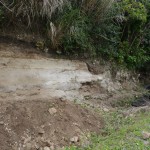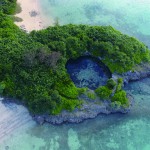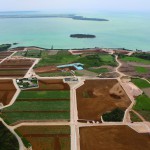Tangible Cultural Properties
【Designated by the City:Tangible Folk】The Steps of Pacha
Until around 1970, there weren’t any paved roads or ports on Kurima Island, and all living commodities and people were transported in and out of the i[…] read more – >
【Designated by the City:Tangible Cultural Properties (Structure)】Former Nishinaka Cooperative Sugar Refinery Site

At the Former Nishinaka Cooperative Sugar Refinery Site, you can find the “Former Nishinaka Cooperative Sugar Refinery Chimney,” which represents Miya[…] read more – >
【Designated by City:Tangible Cultural Properties (Structure)】Myaatsu Haka Tomb
This ancient tomb shows the forms of Myaaka, a distinctive style of Miyako Islands. The outer walls are the cut stones piled up to 7.6 meters in lengt[…] read more – >
【Designated by the City:Ancient Document】Family Tree of the Kawamitsu Family
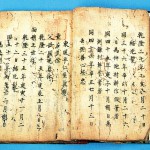
The Kawamitsu Family is a lineage originating with Kawamitsu Uputunu and those whose first names start with the letter “真” (Sincerity). The Family Tre[…] read more – >
【Designated by the City:Historical Records】Records Related to Shoei-Uji and the Motomura Family
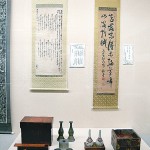
In Miyako, those with the ancestral background whose names start with the character 朝, are called the Shoei-uji Clan, drawn from the last name Sho ori[…] read more – >
【Designated by the City:Classical Literature】Tombstone of Ongawa Satonushi Pechin
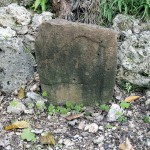
Built in the Bakumatsu period, this tombstone is old in comparison to other old tombstones found today. It is built with sandstone, measuring 62cm in […] read more – >
【Designated by the City:Tangible Folk】Agiisu (Chikaraishi Stone) of Gusukube
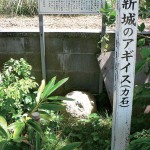
In each of the settlements, there were numerous tests of strengths among the youths up until before the war. One of these was sumo wrestling, but ther[…] read more – >
【Designated by the City:Classical Literature】Hohonhi Monument of Motomura Family

The inscribed words in this monument were presented to a member of the Shoei-uji clan, Chosho (Chosho Motomura, in office from 1851 to 1876), who was […] read more – >
【Designated by the City:Structure】The Main Gates and Stone Walls of Hirara Daiichi Elementary School
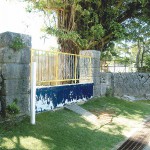
It is believed that the stone walls of the Hirara Daiichi Elementary School were constructed around 1932, making it 73 years since the completion. Upo[…] read more – >
【Designated by the City:Structure】Nishitsuga-Baka Tomb
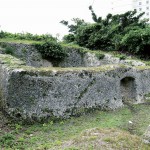
The Masumo-uji clan tombs are aligned, east and west, and are commonly referred to as Tsuga-Baka tombs. Tsuga means “masu,” the square container used […] read more – >
 宮古島アプリの綾道(あやんつ)トップページ
宮古島アプリの綾道(あやんつ)トップページ 宮古島アプリの綾道(あやんつ)の内容
宮古島アプリの綾道(あやんつ)の内容 宮古島の3つのルート
宮古島の3つのルート 宮古島市長のあいさつ
宮古島市長のあいさつ 宮古島文化遺産紹介
宮古島文化遺産紹介
